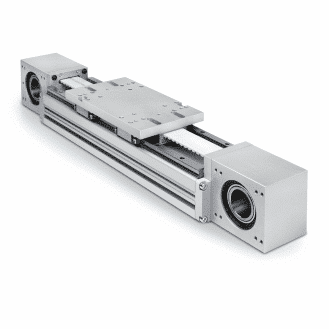
Flender tire coupling
Flexible couplings consist of rigid parts and an elastic connection. This elastic element makes them torsionally flexible. As such, they can compensate for certain misalignments but are mainly intended to absorb shocks and vibrations in the transmission resulting from variations in torque (from a pulsating torque, for example).
There are various types of flexible couplings, such as elastomer couplings, jaw couplings, tire couplings, grid couplings, etc.
They have various applications in conveyor belts, mixers, pumps, etc.
Choosing a coupling of this type depends on several factors, such as the space available for mounting it, the durability required, and the transmission capacity.
The operating temperature is an equally important aspect. The product’s technical characteristics usually indicate the temperature range in which the coupling can operate.
As with any mechanical assembly, it is difficult to achieve perfect alignment between the parts. As such, there are misalignments between the drive shaft and the driven shaft that can complicate the transmission of movement. These misalignments can be axial, radial, or angular. Misalignment can lead to fatigue or wear of the coupling. Therefore, when selecting a coupling, you must consider the speed of rotation, the maximum permissible misalignment, and the torque the assembly can withstand. This information is provided by the manufacturer for each product.
When transmitting high powers, ensure that the torque transmitted is less than the maximum torque indicated in the product’s technical characteristics, leaving a margin proportional to the expected misalignment. The rotational speed of flexible couplings is limited, so they are not suitable for shafts with high rotational speeds, especially if there is significant misalignment.
Concerning mechanical shocks and vibrations, these couplings can generate vibrations if they start to show backlash due to wear. Fixing these assemblies with a flange helps prevent marks from being produced on the shafts, offering greater resistance to sudden reversals and vibrations.










